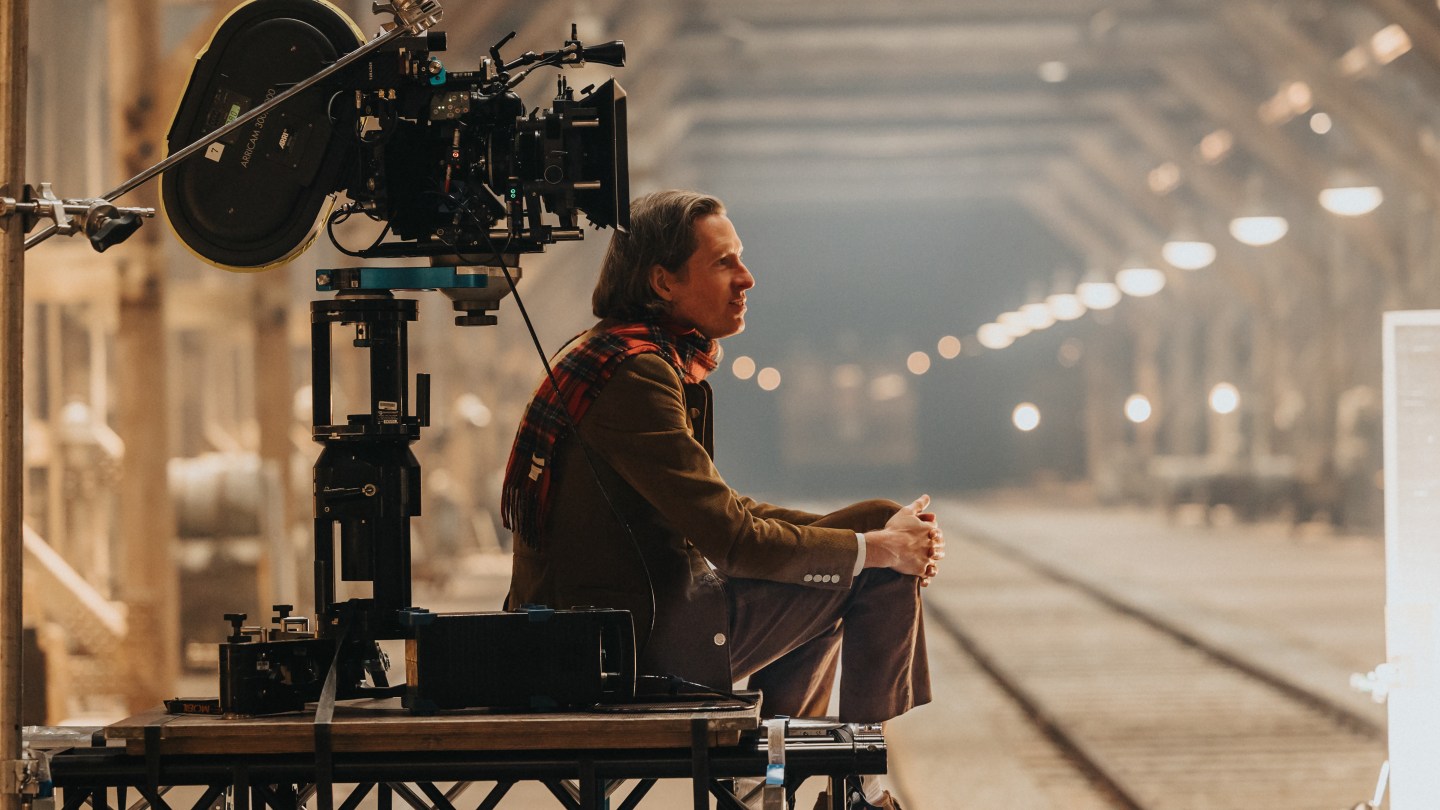Wes Anderson: A Double Feature – Understanding His Cinematic Vision

Welcome to your ultimate source for breaking news, trending updates, and in-depth stories from around the world. Whether it's politics, technology, entertainment, sports, or lifestyle, we bring you real-time updates that keep you informed and ahead of the curve.
Our team works tirelessly to ensure you never miss a moment. From the latest developments in global events to the most talked-about topics on social media, our news platform is designed to deliver accurate and timely information, all in one place.
Stay in the know and join thousands of readers who trust us for reliable, up-to-date content. Explore our expertly curated articles and dive deeper into the stories that matter to you. Visit Best Website now and be part of the conversation. Don't miss out on the headlines that shape our world!
Table of Contents
Wes Anderson: A Double Feature – Understanding His Cinematic Vision
Wes Anderson. The name alone conjures images of meticulously crafted symmetry, pastel palettes, and quirky, melancholic characters. His films are instantly recognizable, a unique blend of whimsy and profound sadness that has captivated audiences worldwide for decades. But what is it about Anderson's cinematic vision that resonates so deeply? This article delves into the key elements that define his distinctive style, exploring the recurring themes and techniques that make his work so compelling.
The Hallmarks of Anderson's Style:
Anderson's films are more than just aesthetically pleasing; they are carefully constructed narratives with recurring motifs that contribute to his signature style. Let's examine some key elements:
-
Symmetrical Composition and Framing: The deliberate, almost obsessive symmetry in his shots is immediately noticeable. Characters are often positioned precisely within the frame, creating a sense of balance and order that contrasts with the often chaotic nature of the storylines. This visual precision contributes to the film's overall aesthetic appeal and enhances the storytelling. Think of the perfectly aligned train tracks in The Darjeeling Limited or the symmetrical architecture in The Grand Budapest Hotel.
-
Pastel Color Palettes: Anderson favors muted, pastel colors, creating a distinct visual identity. These colors contribute to the dreamlike quality of his films, often evoking a sense of nostalgia or longing. The vibrant yet subdued tones are a critical component of his unique visual language.
-
Whimsical Narratives & Melancholic Undertones: His films often feature quirky characters embarking on whimsical adventures, yet beneath the surface lies a current of melancholy. The characters grapple with loss, familial dysfunction, and the complexities of human relationships, adding a layer of depth that transcends the surface-level charm. This delicate balance between humor and heartbreak is a hallmark of his storytelling.
-
Recurring Actors and Themes: Anderson frequently collaborates with the same actors, creating a sense of familiarity and continuity across his filmography. This ensemble cast, including Bill Murray, Owen Wilson, and Adrien Brody, contributes to the distinct "Wes Anderson" feeling. Furthermore, recurring themes of family, loss, and the search for meaning permeate his work, adding depth and resonance.
Beyond the Aesthetics: Exploring the Deeper Themes
While the visual style is undeniably captivating, the true brilliance of Wes Anderson lies in the exploration of complex themes. His films often delve into:
-
The Search for Identity: Many of his characters are on a quest for self-discovery, grappling with their place in the world and their relationships with others. This is particularly evident in films like Moonrise Kingdom and The Royal Tenenbaums.
-
The Importance of Family (and its Dysfunction): Family dynamics, both functional and dysfunctional, are central to many of his narratives. He doesn't shy away from portraying the complexities and challenges of family relationships, highlighting both the love and the conflict.
-
Nostalgia and the Past: A potent sense of nostalgia permeates his work, often focusing on a romanticized or idealized view of the past. This nostalgic lens adds to the overall melancholic tone, highlighting the bittersweet nature of memory and lost time.
A Cinematic Legacy:
Wes Anderson's influence on contemporary filmmaking is undeniable. His unique cinematic language has inspired countless filmmakers and continues to captivate audiences with its blend of visual artistry and emotional depth. His films are not merely to be watched; they are experiences to be savored and contemplated. Whether you're a longtime fan or a newcomer to his work, exploring the world of Wes Anderson is a journey well worth taking.
What's your favorite Wes Anderson film and why? Share your thoughts in the comments below!

Thank you for visiting our website, your trusted source for the latest updates and in-depth coverage on Wes Anderson: A Double Feature – Understanding His Cinematic Vision. We're committed to keeping you informed with timely and accurate information to meet your curiosity and needs.
If you have any questions, suggestions, or feedback, we'd love to hear from you. Your insights are valuable to us and help us improve to serve you better. Feel free to reach out through our contact page.
Don't forget to bookmark our website and check back regularly for the latest headlines and trending topics. See you next time, and thank you for being part of our growing community!
Featured Posts
-
 Dodgers Defeat Athletics Ohtanis Key Three Run Home Run
May 16, 2025
Dodgers Defeat Athletics Ohtanis Key Three Run Home Run
May 16, 2025 -
 Sanders Private Jet Use Under Fire Cruz Leads The Criticism
May 16, 2025
Sanders Private Jet Use Under Fire Cruz Leads The Criticism
May 16, 2025 -
 Mlb Power Rankings Detroit Tigers Steady Climb
May 16, 2025
Mlb Power Rankings Detroit Tigers Steady Climb
May 16, 2025 -
 Soderstrom Prop Bets Athletics Dodgers Matchup May 14th
May 16, 2025
Soderstrom Prop Bets Athletics Dodgers Matchup May 14th
May 16, 2025 -
 Knicks Fall To Celtics In Absence Of Tatum
May 16, 2025
Knicks Fall To Celtics In Absence Of Tatum
May 16, 2025
